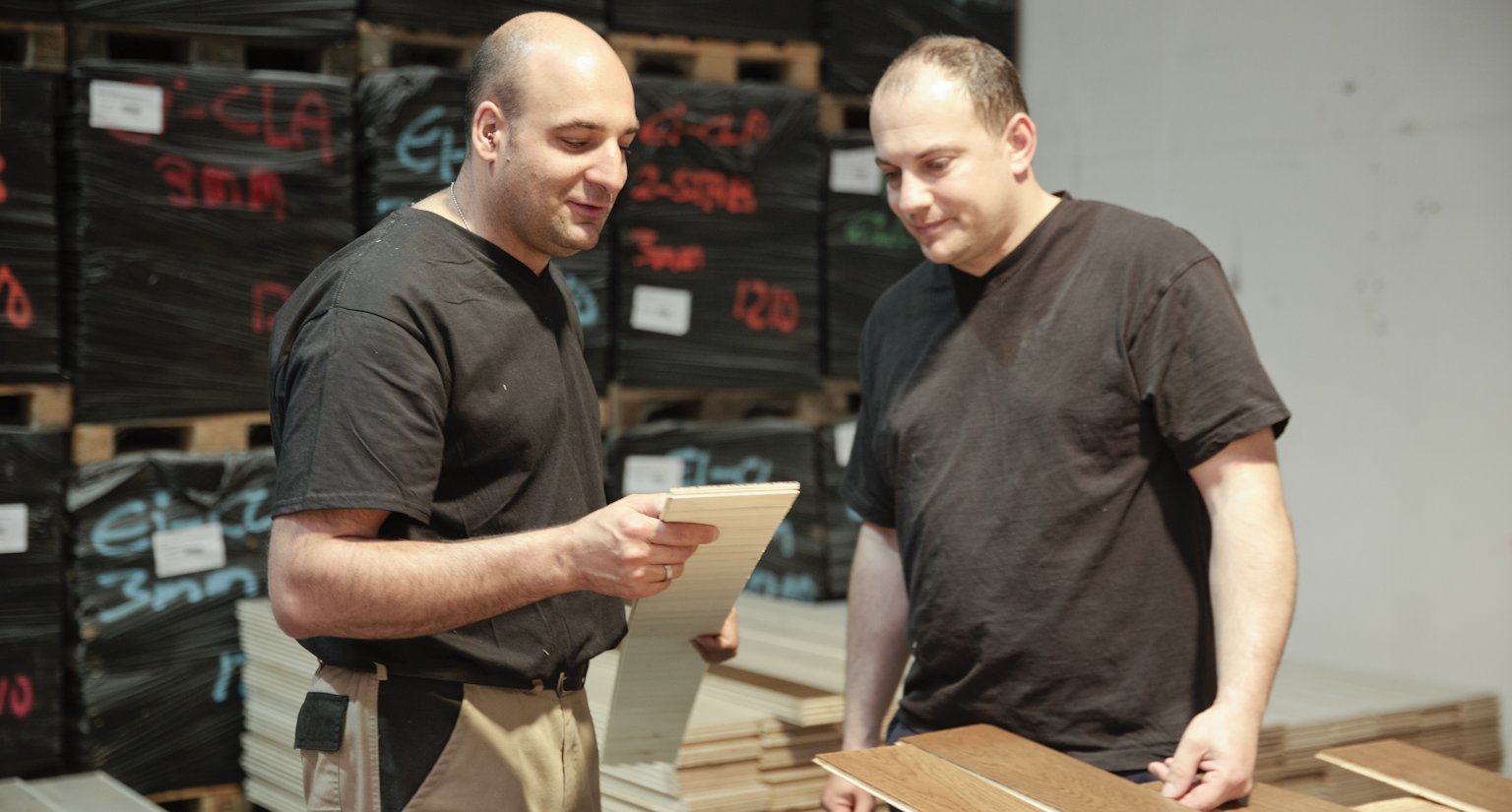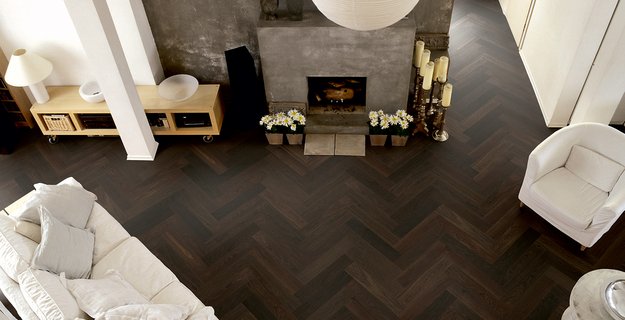![[Translate to EN:] Astlöcher kitten](/fileadmin/_processed_/e/e/csm_pd8a0500_68cde1b327.jpg)
Choosing parquet flooring: multilayer parquet or solid parquet?
Multi-layer parquet or solid parquet: Which wooden floor is the right choice for me?
When a new house is being built or an old house is being renovated, the question arises as to which floor covering should be chosen. Many people opt for a wooden floor, and there are many reasons for this.
A parquet floor is made of wood, a renewable, natural raw material. In addition, a wooden floor has a positive effect on the indoor climate, has a unique feel, has a good eco-balance, is durable, hard-wearing, easy to care for and hygienic.
The first decision to be made is whether to install a multi-layer parquet or solid parquet. Both types of parquet are stable and durable, but differ in terms of manufacture, installation method and surface treatment.
Mehrschichtparkett
Multi-layer parquet consists of a core layer and a wear layer. Spruce or pine are used as the backing, while a variety of wood species can be used for the wear layer, with oak parquet being the most popular. Multi-layer parquet is available in various thicknesses; if underfloor heating is present, thinner parquet floors are the better choice.
The biggest advantage of multi-layer parquet is that it is easy to install. The parquet flooring is lacquered or oiled during production, so no finishing is required on site. With oiled surfaces, however, it is recommended that the entire floor is soaked after installation to provide maximum protection. Many types of pre-finished parquet can be laid as a floating floor; with the appropriate knowledge, you can install it yourself. However, if there is underfloor heating, multi-layer parquet must always be fully glued down! This is quick and easy with larger planks, so there are no high installation costs.
Multi-layer parquet is durable and can be sanded down up to three times. This type of parquet flooring is also very dimensionally stable, which means it works less and can be optimally combined with underfloor heating.
Solid parquet
Solid parquet is stable and can be sanded several times. The wooden floor consists of solid, continuous elements and must always be glued down over the entire surface. Solid parquet is usually laid unfinished and has to be sanded, varnished or oiled on site. The strips tend to be small and are usually over 20 mm thick. All of these factors mean that installation is much more complex and therefore more expensive compared to multi-layer parquet. It is not possible to lay the flooring yourself; a floorer must always be consulted!
If underfloor heating is present, experts usually advise against laying this type of parquet flooring. The reason for this is that solid parquet has a stronger movement behavior than multi-layer parquet when the climate fluctuates, which can lead to gaps forming. In addition, solid parquet is generally stronger, which means that less heat can penetrate and higher heating costs are incurred.



![[Translate to EN:] Eiche country natura Fischgrät](/fileadmin/_processed_/a/1/csm_bilaflor500_eiche_country_natura_fischgraet_wohnzimmer-6_7371_rgb_310f7549a6.jpg)
![[Translate to EN:] Nuss ami country](/fileadmin/_processed_/6/d/csm_woodflor182_nuss_ami_country_natura_sh-11036869_113010013427_rgb_e3cde0f435.jpg)